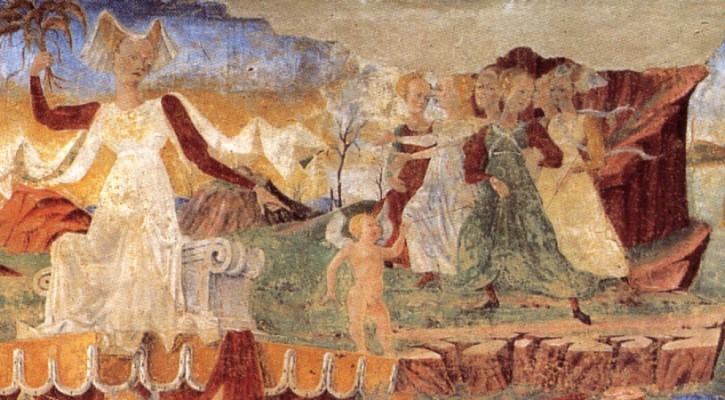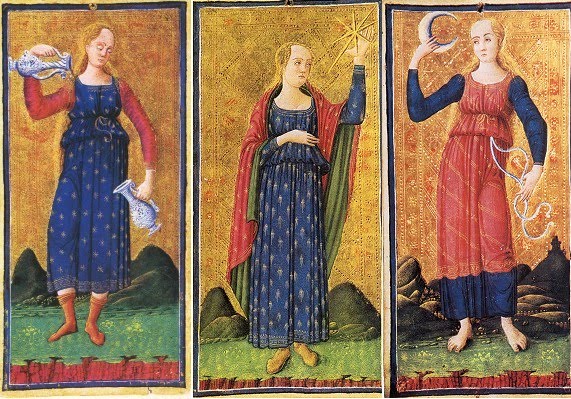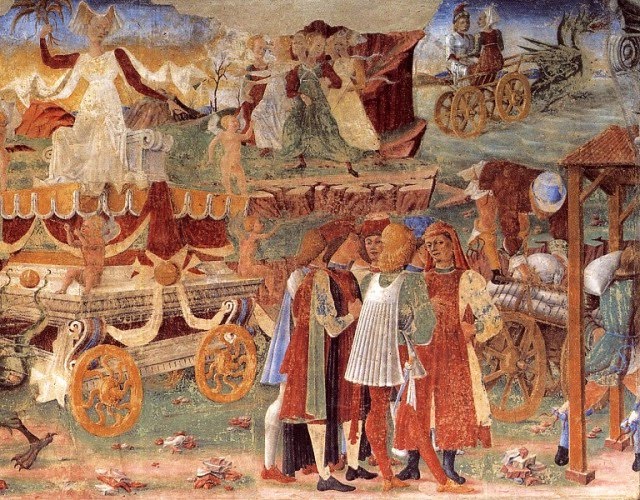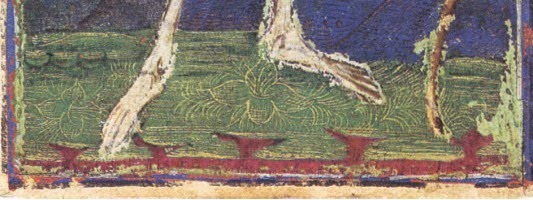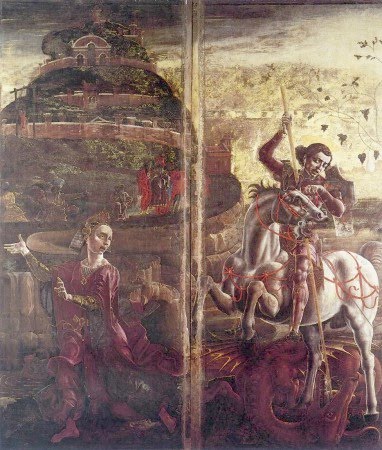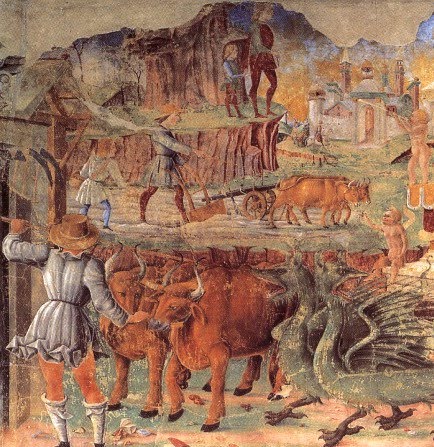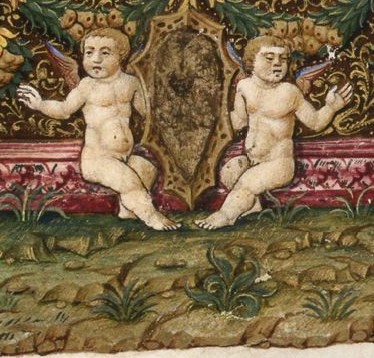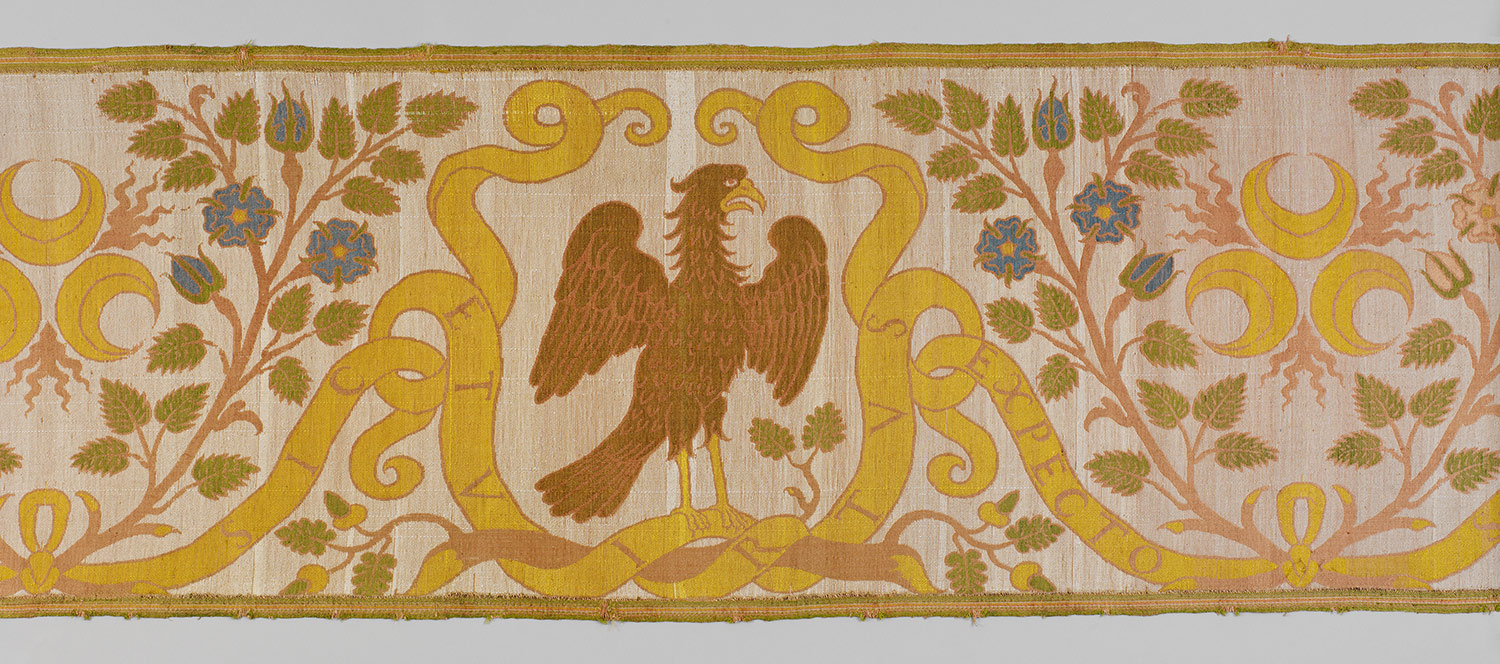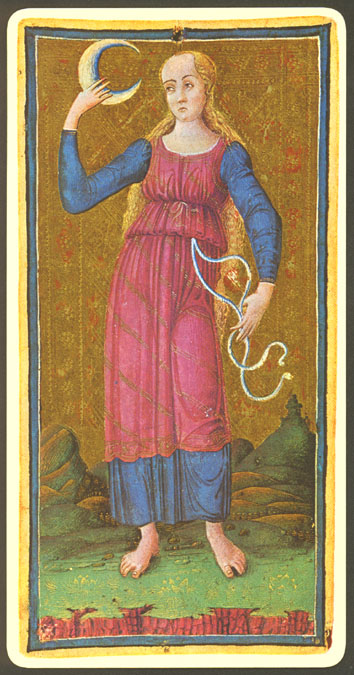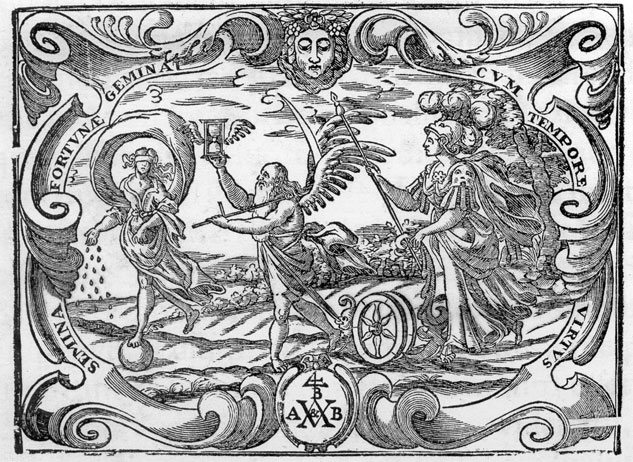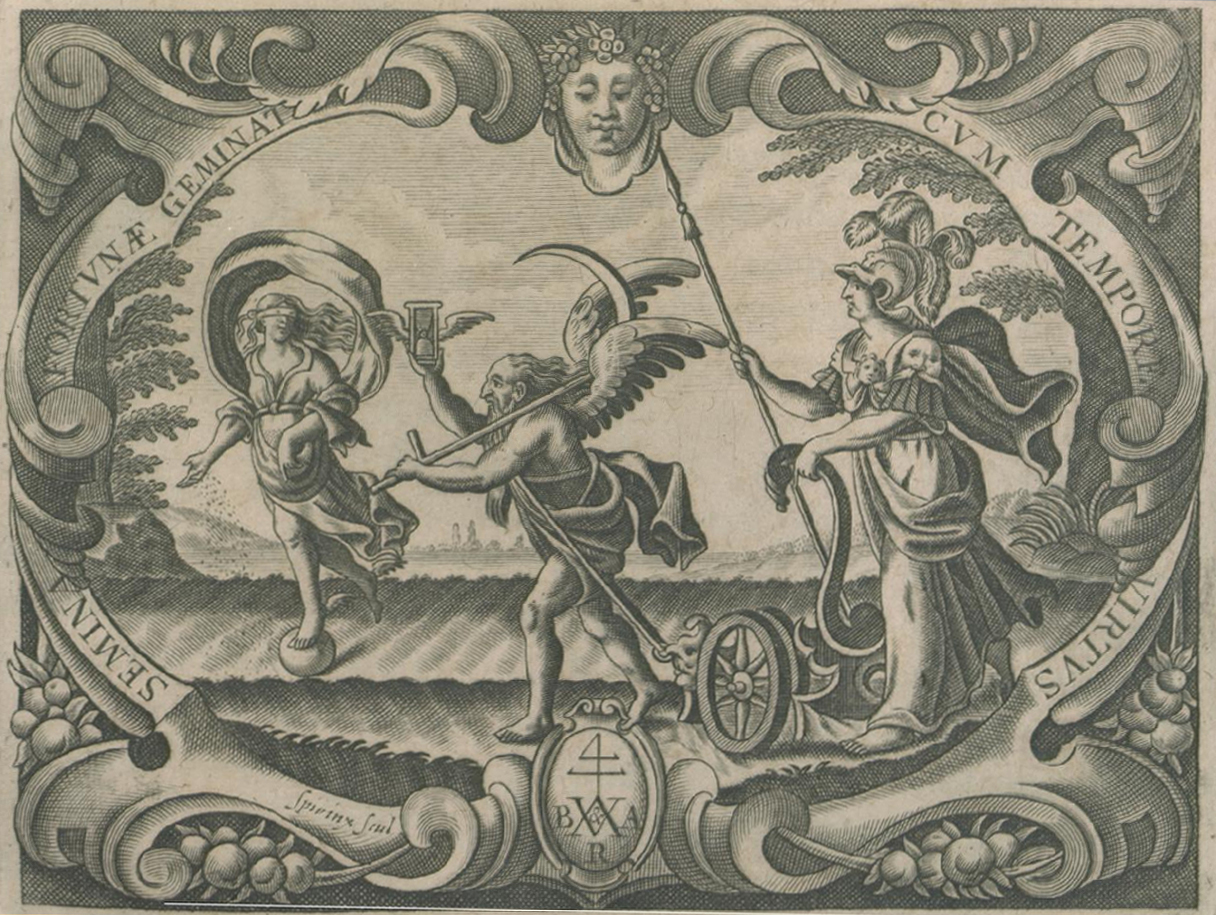...mikeh wrote:Your inclusion of "Milan" for 1.1.1441 is your speculative conclusion and interpretation of the data; likewise for 1452 and 1457. Just because 14 special cards are made for someone from Milan was doesn't mean it was for a Milan deck. You are inserting your conclusions into your premises.16 - Milan (Filippo Maria) ca. 1425 - Michelino deck
14 - Ferrara - Milan (Bianca Maria) - note from 1.1.1441
16 - Milan (Filippo Maria) marriage deck 1441 (reconstructed Cary Yale)
14 - Milan (Bianca Maria) Bembo cards ca. 1452
14 - Ferrara - Milan (Galeazzo/Borso) 1457 (70-cards deck)
16 - Florence (Lorenzo de Medici) Charles VI ca. 1463
so 14 appears in Ferrara and in the Milan of Bianca Maria
and 16 in Florence and in the Milan of Filippo Maria Visconti
What else reason they should have followed? With Dummett's Benedetto explanation this idea was dropped ... so Dummett has to be asked, what he imagines, what happened with the deck production in 1452. Lost and gone with the wind as the theory of the standard Tarot in 1450?
It seems, that the 70-cards-note from 1457 finally made some silent impression ...
Wasn't your time for the wall-hangings not a little bit insecure? Even, if they had wall-hangings with specific motifs with Hercules without club, why shouldn't have the prefered Hercules of Lorenzo a club, especially as this club he might have found in many card decks (probably from Spain) or in private favor for the giants Morgante or Margutte, who used similar tools to educate some enemies.Wickson (http://jducoeur.org/game-hist/wicksontarot.html) gives some of the rules for determining points according to the 1637 Rule. They are complex. Individually, only Kings, Fool, Magician, and World earned points.
???? It's very usual for Tarot, that also Queens (4 or 3 points), Cavallo (3 or 2) and Page (2 or 1) count direct points. The higher or lower worth depends on the system of counting. If you take 1+2+3+4 for the courts and 4 for the fool-pagat-world, 4x10+12=52 ... if you use 1/3 point per card you have 78:3 =26 and you have with 52+26 = 78 .... do you again believe in the great accident? ...... this appears, as far I know, in a game for 3 players, so 1/3 per card has the logic, that one trick counts one point.
If you take the higher value with 2+3+4+5, usually each other card is counted as 1 point, than you have 78 (for the cards) and 52 for the courts+3 specials, together than 130 ... accident?
...... if you take a 5x14-deck and the counting per card as 1/4 , then you've the usual 52 + 70/4 = 69.5 points - so nearly 70. Accident? 1/4 seems to indicate, that the game was played with 4 players.
This combination counting is not the basic game, I would assume, that it is an Italian favor, probably resulting of imports from other games with similarity to Poker.Other court cards and trumps earned points in combinations. In such combinations, the various trumps had an equal number of points, of varying number depending on how many . All this was at the beginning, before any cards were played.
This are external points, which change only the value of the exchanged money. The internal points (as shown with 78, 130 etc.) only decide, who wins the game, the external or extra points (for instance for capturing the pagat) can reduce or increase the game value, which is paid at the end of the game (or noted at a game list). Extra points are mighty and can cause a Null-Spiel (nobody wins, nobody loses).For points won during play and at the end, there were other rules, which Wickson does not go into, except for mentioning bonuses for capturing the Magician or a King in the last trick. De Gebelin also talks about the added points during and after the hand in his Article III, sections 3-5 (http://tarotpaedia.com/wiki/Du_Jeu_Des_Tarots); the French is a little easier to read. I'm not sure what the total number of points per hand would be, but it certainly isn't the total of the trumps' numbers added together.
You have the Dummett article and it points to the Cicognara-problem, who was assumed to have worked in Ferrara. Likely the idea was born with this problem.Who among art historians called either the added cards or Benedetto "Ferrarese style"? I'd like to know more. I know Dummett did, but he's no art historian, and all the characteristics he found in common to the cards and Benedetto--pursed lips, high forehead--are actually characteristics of Milanese International Gothic.
I personally rarely collect art historians - too much contradictions to other art historians. One doesn't really know, whom you can trust.
I think, Dummett suggested something like this...I am not wedded to a particular date.what use should an elder lady like Bianca Maria around ca. 1462 have for card deck? Probably she would order another sort of art.
She had many children, much responsibilities and she doesn't look young - we have a portrait. The persons in this time could have a short life. They were often "old" with 40.As far as I'm concerned, the added cards could have been c. 1475 Galeazzo. The workshop would have kept their sketchbooks around indefinitely. If she did loan it her deck--and there is no reason why she needed to--it would have been to provide decks for the next generation, other branches of the family, and perhaps even wedding gifts. Incidentally, Bianca wasn't very "elder" in 1462. She was 38 with a 6 year old daughter. She would have played cards with her children.
Actually the Sforzinda suggestion was made during the LTarot discussions the first time, as far I know. Nonetheless there are insecurities in this idea.Yes, you are right. I hadn't read Wikipedia's article on the architect (http://en.wikipedia.org/wiki/Filarete). Sforzinda wasn't exactly a secret. Filarete was a Florentine who had come to Milan on Cosimo's recommendation. He dedicated the book, finished in 1464, to Piero; Florence's copy is dated 1465 (what you would call perhaps not a coincidence). Also, the shape of the walled city on the World card is eerily similar to the design reproduced in the article.Surely he knew about Sforzinda - the Medici and the Sforza had all their diplomats and spies and there were considerable exchange, what who was doing, what were his favors and interests and how one could possibly influence him.
The only question for me is, would they really have thought to design a World card around that theme? It still strikes me as more Galeazzo's style, and more in the tradition of the CY design (which I still call a Grail motif), as compared with the Florentine card. However they did have a major stimulus for such a design staring them in the face, in the morning' post, almost literally. And while I think of it, why do you call the Grail theme for the CY card "impossible"?
"Impossible" is nothing. ... .-) ... but a lot of (stupid ?) ideas would follow, if we desire to try this cake ... a private fight between Sforza and Piccinino has much more smilies.
...I was trying to distinguish the Beatrice d'Este that married Tristano from the one that maried Ludovico. Ludovico's was Ercole's daughter, born 1473-1475 (accounts vary), died 1497. Tristano's was Ercole's sister, born 1427, died 1492-1497 (accounts vary). I did write 1477 by mistake for her date of death; I should have just given the date of birth. The 1492 date is from Art in Renaissance Italy by Paoletti and Radke 2005, p. 551, in Google Books, which has a good family tree showing the relationships and marriages.Wrong. Tristano died 1477, Beatrice lived till 1497 - in Milan. ****Eleanore of Aragon married Ercole d'Este in 1473 and immediately got her younger daughter ...

Do you know http://genealogy.euweb.cz/
The both Beatrices died the same year.
Si reca a Milano per visitare la madre Beatrice d'Este che sta per morire
http://www.condottieridiventura.it/cond ... ICCOLO.htm
Cosimo wished to engage for Anjou, but Sforza wrote a letter, warning against too much influence of France in Italy. This was interpreted by historians as great wisdom of Francesco, as his son Ludovico prepared his defeat with a similar action.You are probably right about Ercole in 1462, because he was then on his own. But it certainly served Borso's interest; the Pope wasn't in the Italian League, and Borso was angling for a dukedom from him. I find it harder to believe that Ercole acted on his own in 1466 and 1467. He was leading Ferrarese troops in 1466, according to Tuohy (Herculean Ferrara, p. 13, at Google Books). I can find no verification of your claim that Florence and Cosimo sided with Anjou in 1462. Most sources simply say that the alliance formed at Lodi in 1455 (with Milan, Venice, Florence, and Naples all on the same side) continued during this time. The sources list times when the alliance was broken, and the war of Ferrante vs. Anjou was not one of them. I do find on the Web Jamison saying (Italy - Medieval and Modern - A History, p. 203, in Google Books): "But for him [Cosimo] Florence would have certainly supported Rene of Anjou in the Neapolitan succession wars" That is, Cosimo prevented Florence from supporting Anjou.
In 1467 we have "COMPAGNIA DI VENTURA, VENEZIA against FIRENZE, CHIESA, NAPOLI, MILANO" (so without Ferrara)
http://www.condottieridiventura.it/tabe ... a/1460.htm
and for Ercole we have before
August 1466
Con il fratello Borso, aiuta Luca Pitti ed altri congiurati contro i Medici; alla testa di 300 cavalli e di molti fanti e balestrieri, giunge a Fiumalbo nel Frignano ed in Lunigiana, per sostenere l'azione dei fuoriusciti. Questa termina presto con un nulla di fatto.
So Borso is at Ercole's side at the begin of the conflict ... but this is only against the Medici in Florence
April 1467
Con Niccolò Contrari, segue Bartolomeo Colleoni contro i fiorentini. Si reca a Venezia con 200 famigli.
Ercole follows Colleoni
May 1467
I veneziani gli riconoscono una condotta di 600 cavalli, aumentabili a 1000 in caso di conflitto. La ferma è stabilita in due anni ed in uno di rispetto; gli è riconosciuta una provvigione annua di 12400 fiorini e la facoltà di giudicare i soldati delle sue compagnie. Si obbliga a militare in qualsiasi parte d'Italia. Si piazza sull' Idice.
Ercole gets a condotta from Venice
In July 1467
Al comando del primo squadrone, si batte contro Federico da Montefeltro alla battaglia di Molinella. Con la sua cavalleria salva il Colleoni, che sta per essere sopraffatto dai nemici: perde tre cavalli ed è ferito da un colpo di schioppetto al malleolo del piede destro, mentre sta cercando di trattenere i suoi che si danno alla fuga. Il suo comportamento in combattimento è lodato da Ludovico Ariosto nell'Orlando Furioso. Trasportato a Ferrara, in condizioni allarmanti, è curato in maniera da potere camminare. Nello scontro vi sono quasi 600 morti; nei giorni seguenti per tutta la campagna si sente il lezzo dei morti perché i cadaveri sono lasciati marcire nei fossati.
He is wounded in the battle and taken to Ferrara for medical help.
So Borso avoided to be involved in a direct conflict with Milan - although he were in the way, that Florentine exiles found a new home on Ferrarese territory.
Well, our theme was Borso and his behaviour.Ross's next sentence, which you omitted from your quote is, "Franscesco Sforza's son Galeazzo Maria commissioned a copy" (http://www.angelfire.com/space/tarot/hercule.html). Ross doesn't say whether it was an illuminated manuscript that Galeazzo commissioned, or a printed version, which you say was 1475. I would assume that the verb "commissioning" implies a manuscript. To me it makes little difference, since 1475 is about when I would date the card. I misspoke about Borso ordering the manuscript. I was trying to paraphrase Ross and put down the wrong name: I meant Niccolo. Sorry. Ross didn't say who Galeazzo ordered the copy from, or when.
I doubt if the Medici told Pollaiuolo for his later miniature to put in a club and not a torch--they would have asked for a small version of the large painting. Pollaiuolo just left out the fire for some reason, which was in the prior wall-hanging. And I know that Hercules was often shown with a club. My point is that he was not shown with a club in the fight with the lion that Pietro and Lorenzo saw every day in their house, nor was he shown with a club in any of the three big wall-hangings there. So they probably would not have inserted a club in their instructions for a card showing Hercules' famous fight with the lion.
You're occasionally in your conclusions very specific, aren't you? ... .-)
Lorenzo was 15 in 1465 ... and he could be a rather arrogant young asshole still in 1467, if you read some of his writings. Nowadays this phase in life is called puberty. When you go back to your personal puberty, wouldn't you have felt well with a strong club to beat the drum? ...
But this iconography isn't the argument - if the fortitudo would look different, then it would be different, and one would have to explain that. You've a manifested style to make trionfi decks (14 or 16 trumps ... if you trust the 5x14-theory ) and you've the creative change of this earlier standard ... who in Italy was responsible for creative changes - usually? People of Florence or the house of Ferrara... both in friendship with Milan, at least before Francesco's death. Milan wasn't known for creativity ... beside Filippo Maria himself. In Florence we've indications of the card creativity, in Ferrara also, but not so logical. Borso was an older man, and the creativity for card playing should have come from the youth. The scene around Pulci and Lorenzo in Florence is ideal. Then we've the change from 7 to 6 palle at a specific time, and the known facts of playing card notes is organizable around this dated feature. Then you've the living contact between Florence-Milan just precisely in this interesting time, when the reason to think about heraldic changes is logical. Then you've Lorenzo's journey to Milan via Ferrara and the letter of his father, why Lorenzo stays so long in Ferrara.
There's no problem to assume, that Lorenzo hired a Milanese painter from Bembo's workshop ... that's just a possibility. It wouldn't change the basic assumptions.
And if you want that Galeazzo had made it ... later, maybe 1475, as you suggested ... who cares, you've a right on your opinion. Gather your arguments, publish them, if you feel strong enough.
Generally the Trionfi cards research profits from the 5x14-theory - even if it would be wrong. A lot of things had been and are and will be researched, which otherwise had found no interest. And even if somebody takes an engaged counter-position it enriches the process.

